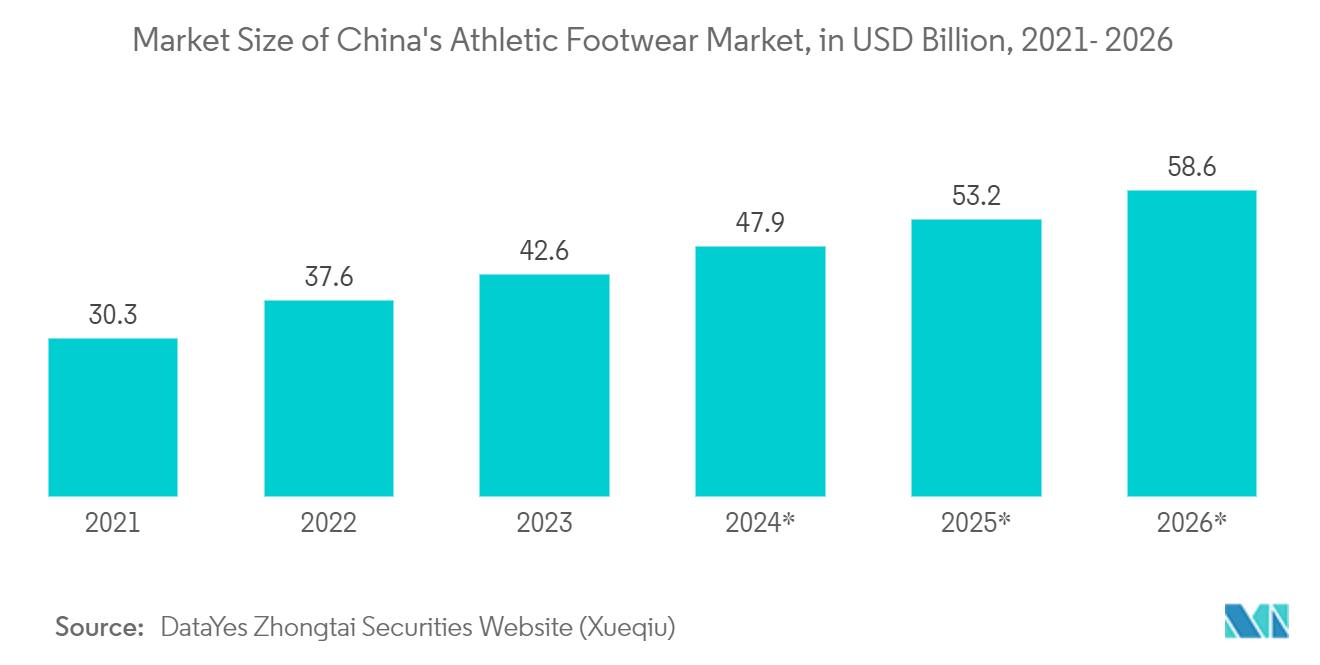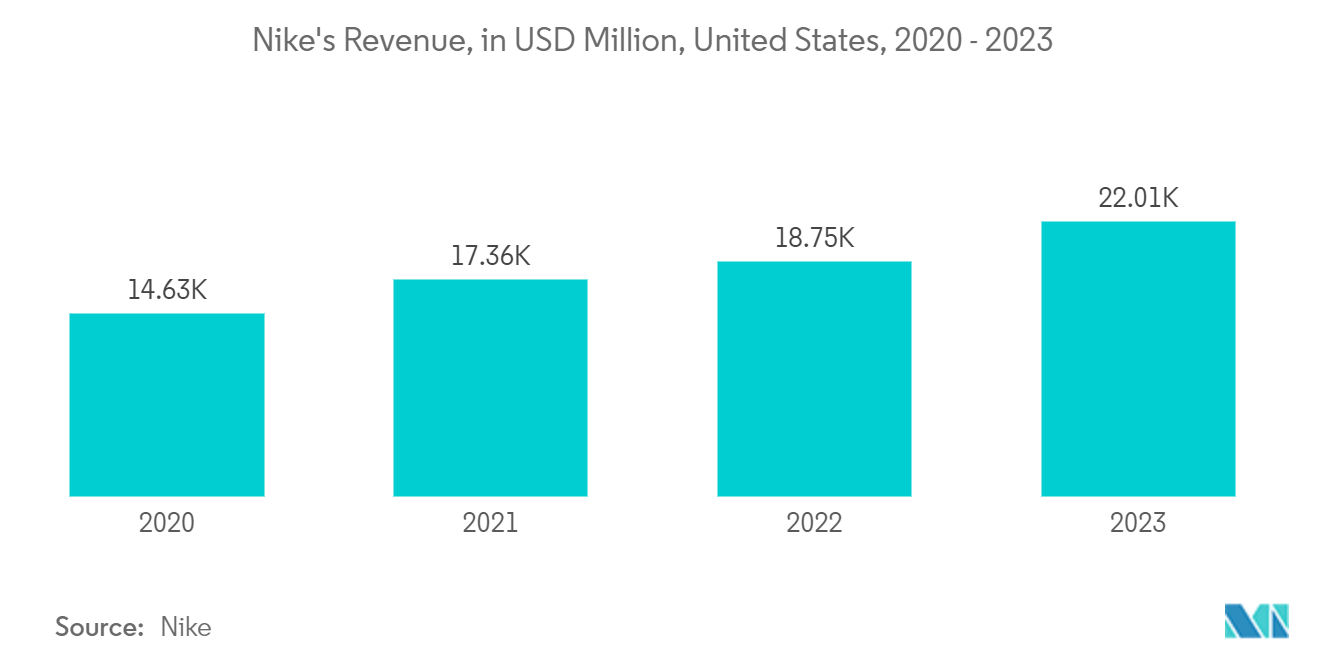Market Trends of Shoe Packaging Industry
The Boxes and Cartons Segment is Expected to Hold a Significant Share in the Market
- Shoeboxes and cartons are crucial in safeguarding shoes from various elements like light, temperature, humidity, scratches, and stains. Beyond mere storage, a shoebox is a powerful advertising tool for businesses. Logos, slogans, and designs adorning these boxes subtly reinforce the brand in customers' minds.
- Additionally, these boxes contribute to the overall unboxing experience, enhancing customer satisfaction and loyalty. Using eco-friendly materials in shoeboxes also aligns with the increasing consumer demand for sustainable packaging solutions, further strengthening the brand's image.
- The shoe packaging market is set for substantial growth, riding on the coattails of the expanding footwear industry. Factors driving this surge include the ascent of e-commerce, a heightened emphasis on sustainable packaging, a focus on branding and aesthetics, a burgeoning luxury segment, and technological strides. E-commerce has increased demand for durable and visually appealing packaging solutions like corrugated boxes and cartons to enhance customer experience.
- Additionally, the growing awareness of environmental issues has pushed companies to adopt eco-friendly materials and practices in their packaging. The luxury segment's growth has further fueled the need for premium packaging that reflects the brand's image and value. Technological advancements like automation and smart packaging are crucial in transforming the shoe packaging market.
- The athletic footwear segment is poised for significant growth in the coming years. This surge is fueled by a global uptick in sports activities, driven by heightened health awareness. Notably, both millennials and older demographics are embracing fitness, spurring demand for athletic shoes across all age brackets. Moreover, a rising number of sports events further bolsters the segment's growth trajectory. The increasing popularity of athleisure, which combines athletic and leisurewear, also contributes to the expanding market.
- Additionally, advancements in footwear technology, such as improved cushioning and support, are attracting more consumers. The rise of e-commerce platforms has made athletic footwear more accessible, further driving sales. Lastly, endorsements by athletes and celebrities continue to influence consumer preferences, enhancing brand visibility and market penetration. For instance, the market size of athletic footwear in China grew significantly from USD 37.60 billion in 2022 to USD 42.60 billion in 2023 and is forecasted to reach USD 58.60 billion by 2026, showing a potential market for shoe packaging manufacturers.
- Further, manufacturers and packaging suppliers in the shoe industry need to align with these trends and work together to craft innovative and sustainable packaging solutions. This collaboration not only meets the sector's changing demands but also positions them to leverage rising demand, opening doors to fresh opportunities in the shoe packaging segment. By staying proactive and responsive to market shifts, they can ensure long-term growth and competitiveness in the evolving landscape.

The North America Segment is Expected to Hold a Significant Share in the Market
- North America dominates the industry, driven by a growing population and escalating consumer demand for sports, fashion, and daily shoes. The region's swift industrialization and proactive governance initiatives to establish manufacturing units propel it as the fastest-growing market segment. Additionally, the presence of significant market players and advancements in technology further bolster the region's market share.
- Increasing disposable income and changing consumer lifestyle preferences also contribute significantly to the market's expansion in North America. Furthermore, the region benefits from a well-established supply chain and robust distribution networks, ensuring efficient product availability and market penetration. The industry's strong emphasis on innovation and sustainability also plays a crucial role in maintaining North America's leading position in the market.
- Further, the surge in e-commerce and digital platforms in the United States has heightened the demand for footwear. Online shopping, gaining immense popularity, offers consumers many footwear choices and seamless shopping experiences. This shift has enabled brands to reach a broader audience and tailor their offerings to meet diverse consumer preferences. Moreover, as urbanization and modernization sweep through numerous countries in the region, lifestyles and fashion tastes are evolving. Consequently, there is a growing appetite for footwear that seamlessly marries style, comfort, and versatility, aligning with these shifting consumer needs. The increasing disposable income and the influence of fashion trends also contribute to this rising demand, as consumers seek to express their individuality through footwear choices.
- Further, celebrities are significantly boosting the demand for trendy footwear among the youth. Their influence through social media and endorsements has made stylish footwear a must-have for young consumers. Additionally, the region's burgeoning sports and fitness culture drives the need for athletic footwear. With a rising enthusiasm for sports, fitness, and outdoor activities, the market for sports shoes, running shoes, and other athletic footwear is witnessing substantial growth. This trend is further supported by increasing investments in sports infrastructure and the growing popularity of fitness events and marathons.
- Nike, a leading brand in athletic apparel and footwear, sponsors major events like the Super Bowl and partners with renowned football clubs like FC Barcelona. Moreover, its endorsement collaborations with top-tier athletes, like Rafael Nadal, further solidify its global sports fan base.
- In 2023, the company boasted a global network of 1,032 retail stores, primarily concentrated in the United States. Nike's revenue surged significantly from USD 14,625 million in 2020 to USD 22,007 million by 2023. This substantial growth highlights the company's expanding market presence and influence. With renowned brands like Nike increasing their footprint, the demand for shoe packaging is set to rise in the coming years. This trend is expected to drive innovation and competition within the shoe packaging market as companies strive to meet the evolving needs of both retailers and consumers. Additionally, the growing emphasis on sustainability and eco-friendly packaging solutions is likely to shape the future of the shoe packaging industry, encouraging brands to adopt more environmentally responsible practices.


